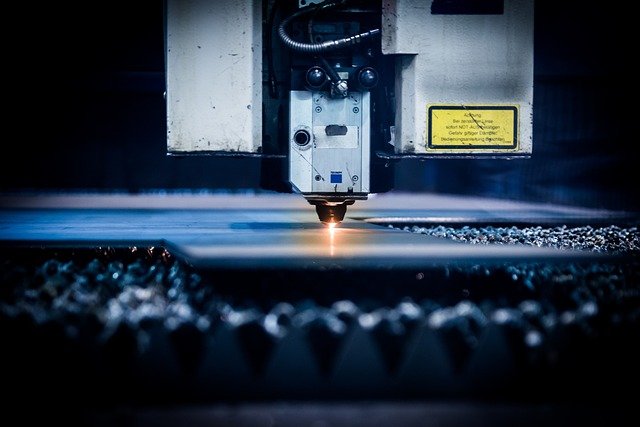A Guide to Laser Welding Prices: What to Expect and How Costs Are Determined
Laser welding has revolutionized manufacturing and fabrication industries with its precision, speed, and versatility. However, understanding the pricing structure for laser welding services can be complex, as costs vary significantly based on multiple factors. Whether you're a business owner considering laser welding for your production line or an individual seeking specialized welding services, knowing what influences pricing helps you make informed decisions and budget effectively.

Typical Price Range for Laser Welding Projects
Laser welding costs typically range from $50 to $200 per hour for service providers, though project-based pricing is often more common. Small-scale projects like jewelry repair or electronic component welding may cost between $25 to $100 per piece, while larger industrial applications can range from hundreds to thousands of dollars depending on complexity and material requirements.
The wide price variation reflects the diverse applications of laser welding technology. Handheld laser welding services for repairs or small fabrication jobs generally fall on the lower end of the spectrum, while automated laser welding systems used in high-volume production environments command premium pricing due to their precision and efficiency capabilities.
Key Factors That Influence Laser Welding Costs
Several critical factors determine the final cost of laser welding projects. Material type significantly impacts pricing, as different metals require specific laser parameters and processing techniques. Stainless steel, aluminum, and titanium each demand unique approaches, affecting both processing time and equipment settings.
Project complexity and precision requirements also drive costs higher. Intricate geometries, tight tolerances, and multi-pass welding procedures require more skilled operators and extended processing times. Additionally, material thickness plays a crucial role, as thicker materials demand more powerful laser systems and longer processing cycles, directly translating to increased costs.
The type of laser welding equipment used affects pricing structures. Fiber lasers, CO2 lasers, and Nd:YAG lasers each have different operational costs, maintenance requirements, and capabilities. Service providers factor these equipment costs into their pricing models, along with considerations for setup time, programming, and quality control procedures.
Cost Comparison: Laser Welding vs. Traditional Methods
When compared to traditional welding methods like TIG or MIG welding, laser welding often carries higher upfront costs but provides significant value through improved quality and efficiency. Traditional welding services typically cost $25 to $75 per hour, making them initially more affordable for simple applications.
However, laser welding’s superior precision, minimal heat-affected zones, and reduced post-processing requirements often justify the premium pricing. The technology eliminates many secondary operations like grinding, polishing, or heat treatment that traditional welding requires, potentially reducing overall project costs despite higher initial welding fees.
Speed advantages also factor into cost comparisons. Laser welding can complete certain tasks in a fraction of the time required for traditional methods, resulting in lower total labor costs even at higher hourly rates. This efficiency becomes particularly valuable for high-volume production runs.
When Higher Costs Might Be Justified
Certain applications warrant the premium pricing associated with laser welding technology. Aerospace, medical device manufacturing, and electronics industries often require the precise, clean welds that only laser technology can deliver consistently. In these sectors, the cost of poor weld quality far exceeds the premium paid for laser welding services.
Projects involving dissimilar metals or thin materials particularly benefit from laser welding’s controlled heat input and precision. Traditional welding methods often struggle with these applications, making laser welding not just preferable but necessary for successful completion.
High-volume production runs also justify higher laser welding costs through improved consistency, reduced defect rates, and elimination of post-processing steps. The total cost per part often decreases significantly despite higher welding service fees.
| Service Provider | Hourly Rate Range | Typical Applications | Special Features |
|---|---|---|---|
| Industrial Laser Solutions | $75-$150/hour | Automotive, Aerospace | Automated systems, high-volume capacity |
| Precision Weld Services | $60-$120/hour | Medical devices, Electronics | Clean room capabilities, micro-welding |
| Advanced Manufacturing Co. | $80-$180/hour | Heavy industry, Custom fabrication | Multiple laser types, material expertise |
| Local Fab Shops | $50-$100/hour | General manufacturing, Repairs | Flexible scheduling, small batch focus |
Prices, rates, or cost estimates mentioned in this article are based on the latest available information but may change over time. Independent research is advised before making financial decisions.
Smart Tips to Estimate and Managing Your Welding Budget
Effective budget management for laser welding projects starts with detailed project planning and clear specifications. Provide service providers with comprehensive drawings, material specifications, and quality requirements to receive accurate quotes. Ambiguous project details often lead to cost overruns and unexpected charges.
Consider consolidating multiple small projects into single orders to leverage volume discounts and reduce setup costs. Many laser welding service providers offer preferential pricing for larger orders or ongoing relationships. Additionally, flexibility in scheduling can result in cost savings, as providers may offer discounts for non-urgent work that fills gaps in their production schedule.
Evaluate the total cost of ownership rather than just initial welding fees. Factor in quality improvements, reduced rework, faster delivery times, and elimination of secondary processing when comparing laser welding costs to traditional alternatives. This comprehensive approach often reveals laser welding’s superior value proposition despite higher upfront costs.
Understanding laser welding pricing helps you make informed decisions that balance cost, quality, and project requirements. While initial costs may seem higher than traditional welding methods, the precision, efficiency, and quality advantages often provide excellent value for demanding applications. By considering all factors that influence pricing and implementing smart budgeting strategies, you can effectively leverage laser welding technology while managing costs appropriately for your specific needs.




